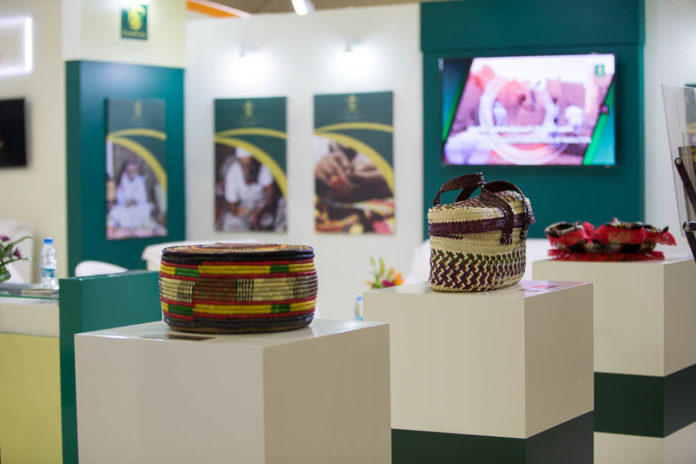Palm frond products vary in uses. They can be used as baskets, for serving food, fans and in modern uses as book covers, pouches and bags. Cylindrical-ring frond products are typically found in the south of the Arabian Peninsula.
Two types of fronds are used in the traditional craft. Date palm fronds and doum tree fronds are both native to the Arabian Peninsula. Cotton strings for binding, fabrics and sometimes clear plastic sheets used mainly for protection, and dye for adding colour.
The first part of the process is dyeing the fronds. Not all fronds used are dyed normally. However, in the case that the purpose of the product is decoration, then fully coloured products can be found. And this is the opposite if the product is used for food-related purposes and it does not use any additional material unless it does not in direct contact with food or uses a protective layer of plastic.
The fronds are then woven into long sheets or cylinders. This depends on the region it comes from. In most of the Arabian peninsula, sheets are used, but in Tabuk and the southern regions, cylinders are used. The pieces are then laced together using fronds or strings. The final touch is sewing in the fabrics and plastic by hand to the product.
The use of plastic depends on the purpose of the product. Mostly the plastic is used for products related to food in order to protect the product and to make it easier to clean. However, other fabrics are mainly used as decoration.
Nowadays, the demand for palm products is not as high as most crafts. However, they are slowly returning to the mainstream as craftspersons innovate the product for daily use and for special occasions and the low cost and prices which makes frond products one of the most sold items in festivals. And in terms of availability and the consumer access to it, palm products are fairly easy to acquire. They can be found even in some malls due to the fact it is easy to make and its prices are low. The materials cost is the least among other crafts.





